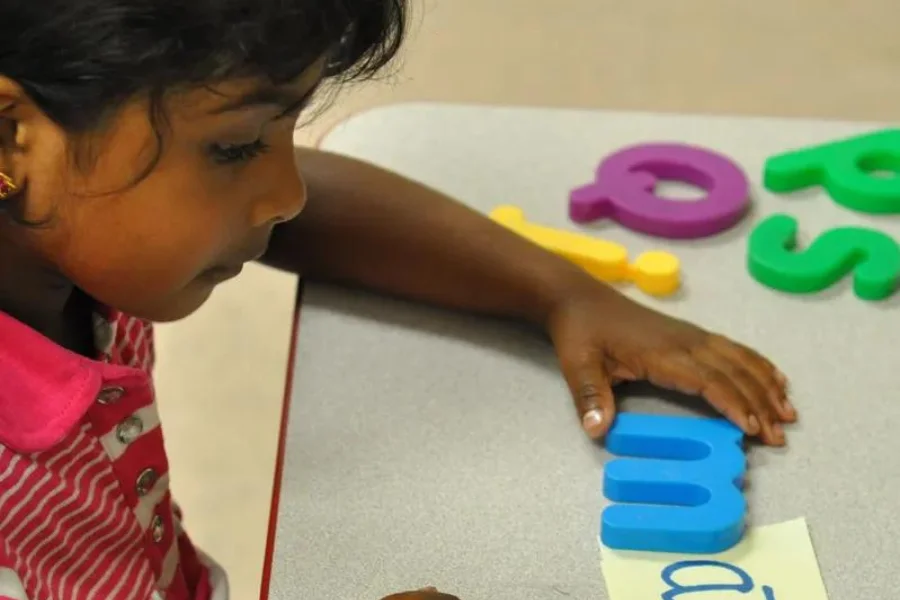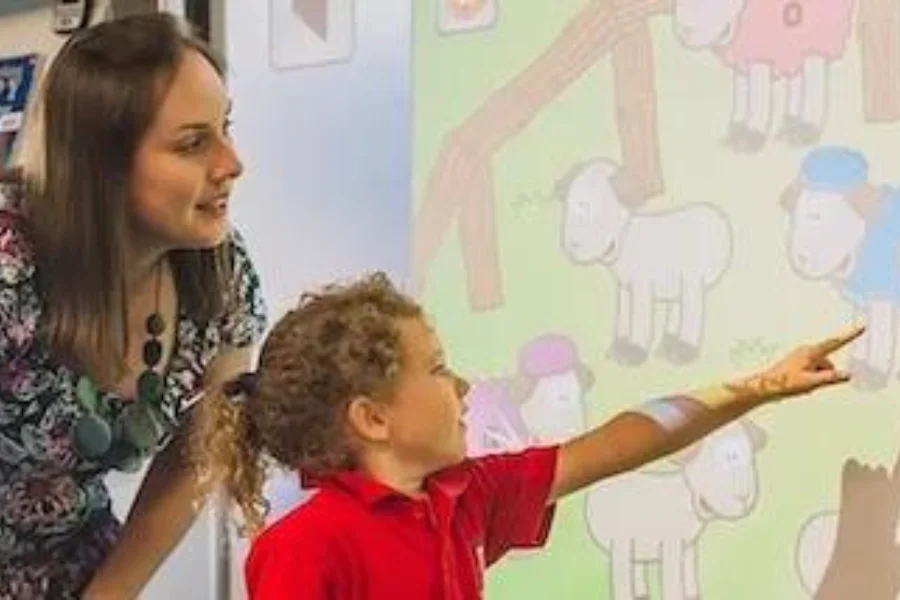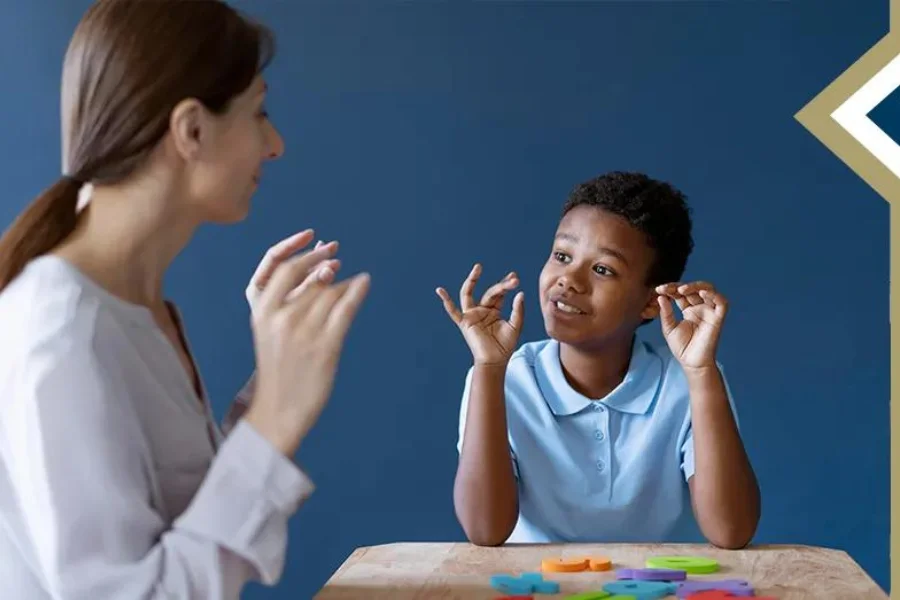Phonics and Reading
Source: groups
Phonics and Reading
Phonics and Reading are important foundations for initial learning development, and understanding their relationship is important in helping students to become confident readers. By adding Phonics and Reading approaches, young students can more easily decode words and understand texts, building a strong base for their educational voyage.
This article explores various features of Phonics and Reading, offering practical advice and visions to support both teachers and parents to enjoy the Benefits of Phonics and nurture a love for reading from an early age.
For more details on Best Phonics Course for Teachers, Call / Whatsapp at +919869866277 / +919869546913
To Download the Best Phonics Course for Teachers Brochure, Click Here!
Table of Content

Source: bigfuture
What is Phonics Method?
The Phonics Method is essential in teaching reading, focusing on the relationship between sounds and their corresponding alphabets. This technique helps in a systematic way of learning to read by connecting sounds with visual symbols, supporting a fundamental understanding of how language works.
Here’s a look at the various methods within the Phonics Method that improve Phonics and Reading skills:
Synthetic Phonics
This method educates students on how to convert the alphabet into sounds (phonemes) and then combine these sounds to build words. It is frequently considered one of the most effective forms of phonics instruction.
Analytic Phonics
Unlike Synthetic Phonics, the Analytic Phonics Method relates to teaching students to analyze letter-sound associations in previously learned words to avoid pronouncing sounds in isolation.
Phonics through Spelling
Phonics through Spelling is a method that incorporates spelling as a pathway to support the relation between sounds and alphabets. Phonics Help in Reading, as students learn to spell, they understand and apply the phonics rules, which in turn supports their Phonics and Reading abilities.
Multisensory Phonics
This technique combines visual, auditive, and tactile activities to deepen memory and learning of phonics patterns. Multisensory methods are truly advantageous for students with learning difficulties.
Each Phonics Method helps children acquire a lifelong love for Phonics and Reading by making it easier for them to master its intricacies.
For more details on Best Phonics Course for Teachers, Call / Whatsapp at +919869866277 / +919869546913
To download the Best Phonics Course for Teachers Brochure, Click Here!
How does Phonics Help in Reading?
Phonics Help in Reading by providing a systematic approach to understanding the sounds letters make and the rules that govern their combinations. This method is particularly effective in teaching learners to read English, a language with a complex orthography.
Here are some key ways Phonics Help in Reading:
Decoding Skills
Phonics trains students to break down words into their sounds, allowing them to decode words independently. This skill is crucial for reading fluency and confidence.
Improved Pronunciation
As students learn how the sounds correlate to letters, their ability to pronounce unfamiliar words improves. This is another way Phonics Help in Reading, as accurate pronunciation supports comprehension.
Enhanced Comprehension
By reducing the cognitive limitations in decoding words, phonics allows readers to devote more mental energy to comprehending what they read. This shift from decoding to understanding enhances overall reading success.
Consistency in Learning
Phonics offers a consistent approach to reading education. Students learn a set of rules that apply across many words, making it easier to tackle new reading challenges.
Foundation for Advanced Reading Skills
Learning phonics is more than reading single words; it shapes a foundation for more difficult reading skills, including fluency and understanding of texts.
By integrating Phonics Help in Reading into literacy education, teachers and parents can train students with the necessary skills to tackle the difficulties of reading and help them cherish the Benefits of Phonics while setting them on a track to literacy progress. Phonics and Reading together form a powerful pair that can intensely improve a kid’s learning experience and outcomes.
For more details on Best Phonics Course for Teachers, Call / Whatsapp at +919869866277 / +919869546913
To download the Best Phonics Course for Teachers Brochure, Click Here!

Source: phonicshero
What are Benefits of Phonics?
Discovering the Benefits of Phonics in Education discloses how Phonics Help in Reading and improves writing skills as well among students. Phonics, mainly through the UK-based Synthetic Phonics Teaching and Learning Practice, provides a structured method of literacy that systematically shapes learner’s skills to decode and convert words.
Here’s a detailed look at the Benefits of Phonics:
Synthetic Phonics Methodology
This method is highly regarded for its systematic approach to teaching reading. It involves teaching children to pronounce the sounds (phonemes) in isolation and then blending them (synthesis) to form words. This technique not only supports fluent reading but also improves spelling accuracy.
Audio-Visual Teaching Aids
Utilizing audio-visual aids in phonics lessons improves learning by engaging multiple senses. These aids support reinforcing the connection between the sounds and their visual symbols, making it easier for learners to retain the information and apply it when reading and writing.
Jingles, Stories, and Actions
One of the significant Benefits of Phonics and Reading is the use of jingles, stories, and actions to demonstrate sounds. This approach makes learning phonics fun and memorable. By associating actions and stories with specific sounds, children can more easily recall and apply their phonics knowledge in real reading situations.
Complete Practice of All 42 Sounds
Phonics teaching covers all 42 letter sounds and digraphs (where two letters make one sound), ensuring an inclusive understanding of English phonetics. This thorough practice is essential for evolving a strong foundation in Phonics and Reading, allowing students to handle any word, regardless of difficulty.
Mock-Drills
Regular mock drills in phonics ensure that students can apply their phonetic knowledge in a simulated, yet relaxed environment. These drills are designed to reinforce learning and build confidence, helping students to quickly decode words during actual reading sessions.
Doubt-Solving and Question-Answer Sessions
Effective Phonics Programs include sessions dedicated to solving doubts and answering questions. These interactions ensure that students fully understand the phonics rules and can apply them correctly. They also provide an opportunity to address individual challenges in Phonics and Reading, tailoring the learning process to each student’s needs.
The Benefits of Phonics are diverse and essential for nurturing literacy. Phonics Help in Reading and by following a structured, engaging, and thorough method of phonics education, students get the skills required to become skillful readers and writers, thus enjoying the Benefits of Phonics. This foundation not only supports educational success but also teaches a lifelong love for reading.
For more details on Best Phonics Course for Teachers, Call / Whatsapp at +919869866277 / +919869546913
To Download the Best Phonics Course for Teachers Brochure, Click Here!
How do we Teach Phonics?
Phonics and Reading are an important component of initial literacy education, providing students with the skills required to decode words and advance their reading skills as Phonics Help in Reading.
Here’s an elaborate look at the different methods used to Teach Phonics effectively:
Learning Letter Sounds
Teach Phonics and Reading using the primary letter sounds, helping children relate specific sounds with respective letters.
Digraphs
Teach Phonics by familiarizing students with digraphs, which are two-letter combinations representing one sound, like ‘sh’, ‘ng’ etc.
Short and Long Vowel Sounds
Short and Long Vowel Sound differentiation helps children recognize multiple sounds a vowel makes in different words, such as the difference between ‘a’ in ‘bat’ (short vowel) and ‘a’ in ‘bake’ (long vowel).
Identification of the Sounds
As Phonics Help in Reading and spelling, teaching children to identify and manipulate individual sounds in words and developing phonemic awareness helps them relish the Benefits of Phonics.
Blending (Reading)
Teach Phonics through blending, where children learn to combine individual sounds to pronounce a word, facilitating smoother reading.
Spelling Formation Techniques
Introduce spelling rules that help children form words correctly, enhancing their writing skills alongside their reading abilities.
Consonant Mixes
Focus on consonant mixes to Teach Phonics, where two or more consonants are blended, but each sound can be heard, like ‘bl’ in ‘blue’ or ‘str’ in ‘street.’
Tricky Words
Teach Phonics with special attention to “tricky words” that do not follow standard decoding rules, helping children memorize these exceptions.
Important Phonics Rules
Cover key phonics rules that govern how sounds interact, such as when to double consonants or use ‘ck’ instead of ‘k.’
Alternative Vowel Spellings
Explore alternative spellings for the same vowel sounds, such as ‘ai’ in ‘rain’, ‘ay’ in ‘play,’ and ‘a_e’ in ‘make,’ enhancing flexibility in Phonics and Reading.
Age Appropriate Lesson Planning
Designing age-appropriate phonics lessons, suitable for the developmental stage of the children ensures that the content is neither too easy nor too challenging.
Detailed Guidance for Opening Own Phonics Classes
Provide resources and guidance for educators interested in opening their phonics classes, including curriculum development and classroom management strategies.
Individual Assessment
Assess each child’s progress in Phonics and Reading regularly to tailor instruction and provide additional support where needed.
These approaches help educators to effectively Teach Phonics, building a robust foundation for Phonics and Reading that supports lifelong literacy.

Source: gshed
Teaching Phonics Course
A Teaching Phonics Course is a treasured resource for teachers and parents wishing to support the literacy progress of their students or kids through Phonics and Reading. Vidhyanidhi Education Society (Govt. Regd.) provides an all-inclusive Teaching Phonics Course that is planned to impart the required skills and information to educate phonics efficiently and relish the Benefits of Phonics through Phonics and Reading.
Here are some highlights of what a Teaching Phonics Course typically covers:
Phonemic Understanding
Participants learn Phonemic Understanding which helps to teach the identification of sounds in spoken words, which is crucial for developing reading skills.
Phonics Rules and Applications
The course helps participants delve into the rules of phonics, including how different letters and combinations sound, and application to Phonics and Reading activities.
Instructional Approaches
The Teaching Phonics Course provides approaches for teaching Phonics and Reading in an organized way, ensuring that learners can advance from simple to complex concepts.
Materials and Resources
Participants gain access to a variety of teaching resources that can be used to create engaging and impressive Phonics and Reading lessons.
Evaluation Methods
The Teaching Phonics Course also equips participants with the methods to evaluate the phonetic skills of students, which is key to tracking progress and identifying areas needing improvement.
Vidhyanidhi Education Society’s (Govt. Regd.) devotion to literacy is prominent in its organized approach to teaching phonics. By enrolling in a Teaching Phonics Course, educators and parents can help young readers, providing them with the elemental skills needed for a lifetime of reading success. Phonics and Reading not only boost the learners’ confidence but also enrich their overall academic journey, making the Teaching Phonics Course a pivotal step in facilitating effective Phonics and Reading instruction.
Join Vidhyanidhi’s course & transform the Best Phonics Course for Teachers!
For more details on Best Phonics Course for Teachers, Call / Whatsapp at +919869866277 / +919869546913
To download the Best Phonics Course for Teachers Brochure, Click Here!
Phonics and Reading
FAQs
Where can I do Phonics Course Online?
You can do a phonics course online at institutions like Vidhyanidhi Education Society (Govt. regd.).
How to Start Phonics Classes?
To start phonics classes, enroll in a teacher training course at Vidhyanidhi Education Society (Govt. regd.) and gather relevant teaching materials.





